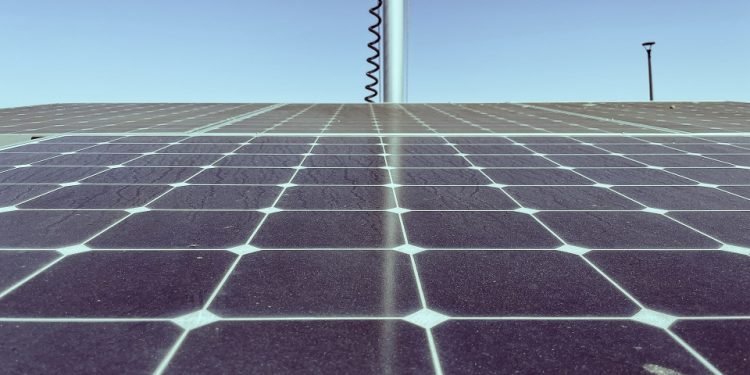The cost of living has risen significantly, and many Australian families are struggling to cope. Therefore, enhancing your awareness of the best money-saving solutions is increasingly important. These alternatives vary wildly, from savvier shopping to conservation and cheaper, more cost-effective power sources. That is why numerous homeowners are turning to renewable energy. The most popular of these is currently solar energy.
Solar power is revolutionary in its innovation. It allows you to draw energy directly from the sun (a perpetual power source freely available to everyone). In harnessing this energy, you can take advantage of a guaranteed energy source while paying less than you would when relying on fossil fuels. As a result, you enjoy the monetary and environmental benefits of this renewable resource. But how can you ensure you are getting the most out of your solar system?
Solar power is a fantastic technology, but it’s not without its limitations. For example, storing the energy your solar panels produce can be difficult. But there is a solution. You need some accessories to help maximise their efficiency. So, keep reading to learn how to save money with these powerful solar products.
Solar Batteries
A solar installation on your home can prove vastly advantageous- particularly in terms of monetary savings on utility bills. But there is one shortcoming: when the sun sets. As much as you may wish it, Australia’s daylight hours never go beyond 14 hours 30 minutes (the longest day in the height of summer). So, what can you do when you rely on sunlight for your home’s power? The best answer to this dilemma is the use of solar batteries.
Solar batteries store any excess energy your solar panels generate during the day. As a result, you can ensure that your home has a constant power supply, even at night after the sun has set. This benefit is even more valuable if you are on an off-grid solar system.
The primary downside of this option is the installation costs. If you opt to connect a solar battery to your new solar system, you may find that the project is beyond your financial capabilities. However, various financing schemes and solutions are available to help you manage this process. You can consult your local solar installer about the cost of solar batteries and their installation.
Solar LED Skylights
Solar LED skylights allow you to dip your toes into a solar energy solution without committing to a complete system.
Solar LED skylights differ from regular skylights in their capacity to store some energy during the day. They do so through a small battery attached to the system. As a result, you have a light source that’s operational at night without increasing your energy bills.
Therefore, the benefits of solar LED skylights are twofold: they provide natural light during the day and store enough power for adequate illumination at night.
Solar Hot Water
Household hot water use has proven to be the most energy-demanding aspect of domestic power use. Consequently, your household’s hot water use is likely the source of high electricity costs. However, since it isn’t feasible to stop using hot water completely, it is best to use the solar solution.
You can install a roof-mounted or ground-based solar water heating system to help meet your home’s hot water needs. This solution consists of a tank connected to a solar panel. The panel provides all the energy you need to heat the tank’s water, eliminating the need for costly grid power while meeting all your hot water needs.
Solar Roof Ventilation
Roof ventilation plays a key role in energy conservation. Proper ventilation is vital in keeping your household costs down. Without it, heat gets trapped within your roof’s attic space. As a result, you may have to deal with excessive moisture and the problems it causes. Moreover, this trapped heat will filter into the rest of your home, thus making it warmer and necessitating the prolonged use of your air conditioning system (thus increasing your utility bills).
It may be best to consider installing a solar roof ventilation system to mitigate the above issues. This system consists of a small DC motor that derives power from a solar panel. A thermostat dictates the motor’s operation. So, when the temperature in the roof cavity gets to a certain level (typically about 30 degrees Celsius), the motor turns on, driving the fan and creating necessary ventilation.
Conversely, during the winter, when temperatures are lower, the ventilation system remains off, thus facilitating the accumulation of warm air that can keep the rest of your home comfortably warm.
Other Accessories
Smartphone Accessories
As mentioned above, numerous accessories can help make your solar power system more convenient. Here are a few more examples:
- Solar chargers– These portable devices allow you to charge your phone or other devices without plugging them into an outlet. You simply set the charger in direct sunlight and wait for it to work its magic!
- Power banks– If you regularly go hiking or camping without access to electricity, this device can come in handy. You only need to put the power bank in direct sunlight for several hours (or days) beforehand and then use it as needed throughout your trip!
- Solar panels– If all else fails, these large panels can provide enough energy so everyone can charge their phones simultaneously!
Solar Lanterns
Solar lanterns are a great option for lighting up your home, especially if you lack electricity. You can use solar lanterns in many different places. Not only are they easy to charge and use, but they are also affordable.
Conclusion
There is no doubt that solar power is the future. It allows you to save money, reduce your carbon footprint and improve your quality of life.
The world is changing, and it is best to change with it. With the right accessories, you can become more eco-friendly and save money on your bills. So what are you waiting for? Get out there and start buying some solar-powered accessories today! Alternatively, consult a local solar installation expert for guidance as you make your first foray into renewable energy.












